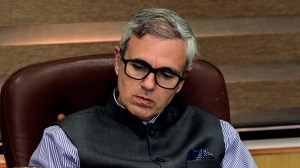In the shadow of disasters
The last Mahakumbh mela of this century is now on in Hardwar. Arrangements for the pilgrims, that should have been complete days before the ...

The last Mahakumbh mela of this century is now on in Hardwar. Arrangements for the pilgrims, that should have been complete days before the mela began on January 1, are still going on. And despite the presence of the devout by the riverside, questions are being raised about the readiness of the holy town to host the Mahakumbh.
The arrangements have been going on since September but they seem nowhere near completion. Even a cursory glance at the progress report of the mela administration is enough to reveal that the PWD is far behind schedule. Of the total 240 km road the PWD was supposed to construct before the February rush, only 130 km of the stretch is complete. Which means not only the major roads within the Hardwar town and the Hardwar-Luxur-Purkaji road but also the Morababad-Dehra dun and Delhi-Nitipass highways are lying incomplete.
Delay in the construction and repair work will mean inconvenience to the pilgrims who will use these highways to arrive in Hardwar.
And even where the work has been completed doubts are being raised about the quality of the roads. "Pot holes have come up on several roads as they were not constructed properly in the hurry to finish work," says local MLA Ambrish Kumar.
But officials claim the town is completely geared to provide the best facilities to the over one crore devotees who are expected to arrive at the banks of the Ganga in the coming four months. And with a budget of Rs 99 crore funds are not a problem.
"The mammoth infrastructure required to organise a religious congregation like the Kumbh is nearly complete," a spokesman of the Kumbh Mela administration told The Indian Express.
Nearly 90 per cent of the work assigned to different agencies like the irrigation department, the public works department, bridge corporation, the water works department, the Ganga Pollution Control Board (GPCE), etc, has been completed, he claimed.
"The main aim of the extensive infrastructure building work this time is to keep the Kumbh totally incident-free," he added.
The administration’s concern is understandable. In the past, a Kumbh at Hardwar has usually spelt disaster. The 1986 Kumbh cost 50 lives, among them women and children. Last year, 26 pilgrims were killed in a stampede at the Har-Ki-Pauri while bathing on the auspicious Somewati Amavasya. And exactly 30 years before that 17 devotees died at the same spot.
So, in it’s bid to ensure that no accident takes place this time, the entire 130 sq km Kumbh area has been divided into 31 sectors. Each sector is equipped with the latest communication facilities, and will be managed by a sector magistrate who will be assisted by a fire-fighting squad, a team of policemen and the health department officials and employees.
Since almost all accidents in the past have been caused by bottlenecks on narrow bridges and roads, the small-sized ghats, where devotees congregate to bathe in the river, the emphasis has been on clearing them.
For instance, to create more space for pilgrims the irrigation department has constructed piers for temporary bridges to connect the Pant Dweep and the Malviya Dweep. It has also constructed new ghats on a 1.2 km area apart from repairing the old ghats and roads.
The bridge corporation has, however, constructed twin bridges — near the Premnager Ashram area and the other near the Har-Ki-Pauri area. Besides that work on seven steel bridges is also said to be complete.
As for the basic amenities, the mela authorities promise that devotees will not face any scarcity of drinking water, Besides six tubewells, 14 infiltration wells have also been commissioned by the authorities to meet the needs of the pilgrims.
Similarly, the mela administration, to avoid traffic congestion within the town area, have set up five temporary bus stations and two temporary inter-state bus terminuses.
To avoid stampedes camps have been set up at short distances from the mela area. They also assure smooth electricity supply during Kumbh, which fails to cut much ice with the locals. "How can we believe themela administration when no arrangements are being made to improve the town’s power supply?", asks the general secretary of the Dharam Yatra Mahasangh, Gangasaran Madadgar.
Ambrish Kumar, however, says the manner in which the electricity poles are being laid in the mela area without grounding may result in a major accident during Kumbh. "And it is not for the first time that the mela administration has not completed its work before December 30", says Ashwini Kumar a 47-year old restaurant owner, who claims to have witnessed three Kumbh melas.
Madadgar also blames the political instability for the delay. "Every time a new government came to power a new mela officer was appointed, with the result that none of them could concentrate on work." Political uncertainty also delayed the release of funds and the Kumbh mela work began only after September, says Madadgar. "And how can you spend the mela budget of Rs 99 crore in a short span of three months?" he asks.
But none of these controversies are likely to faze the faithful who have already begun streaming in.







- 01
- 02
- 03
- 04
- 05
























